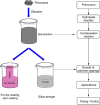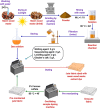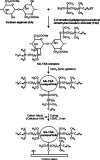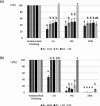Advancements in Antimicrobial Textiles: Fabrication, Mechanisms of Action, and Applications
- PMID: 40224409
- PMCID: PMC11983210
- DOI: 10.1021/acsomega.4c11356
Advancements in Antimicrobial Textiles: Fabrication, Mechanisms of Action, and Applications
Abstract
Within the past decade, much attention has been drawn to antimicrobial textiles due to their vast potential for reducing the spread of infectious diseases and improving hygiene standards in various environments. This review paper discusses recent studies on preparation methods, modes of action, effectiveness against different microorganisms, and applications of antimicrobial textiles in diverse industries. It examines further challenges, including durability, environmental impact, and regulatory considerations, and looks at prospects for developing and integrating these novel materials. This paper intends to provide a broad-based understanding of state-of-the-art technologies and emerging trends in antimicrobial textiles by integrating existing knowledge and highlighting recent advances in this field that contribute much to improved public health and safety.
© 2025 The Authors. Published by American Chemical Society.
Conflict of interest statement
The authors declare no competing financial interest.
Figures































References
-
- Shree Roy T.; Rafsan Fahim M.; Akhter Himu H.; Abdul Gafur M. Developments of antibacterial textiles with functionality of hazardous pollutant degradation. Environ. Nanotechnol., Monit. Manage. 2024, 21, 100934.10.1016/j.enmm.2024.100934. - DOI
-
- Vats M.; Swami M.; Sheokand B.; Rawat V.; Negi D. S.; Kumar A.. Antimicrobial textiles based on nanoparticles and composite, antiviral and antimicrobial coatings based on functionalized nanomaterials. Antiviral and Antimicrobial Coatings Based on Functionalized Nanomaterials; Elsevier: 2023; pp 389–420.
-
- Vojnits K.; Mohseni M.; Parvinzadeh Gashti M.; Nadaraja A. V.; Karimianghadim R.; Crowther B.; Field B.; Golovin K.; Pakpour S. Advancing Antimicrobial Textiles: A Comprehensive Study on Combating ESKAPE Pathogens and Ensuring User Safety. Materials 2024, 17 (2), 383.10.3390/ma17020383. - DOI - PMC - PubMed
-
- Tanasa F.; Teaca C.-A.; Nechifor M.; Ignat M.; Duceac I. A.; Ignat L. Highly Specialized Textiles with Antimicrobial Functionality—Advances and Challenges. Textiles 2023, 3 (2), 219–245. 10.3390/textiles3020015. - DOI
-
- Furxhi I.; Perucca M.; Koivisto A. J.; Bengalli R.; Mantecca P.; Nicosia A.; Burrueco-Subirà D.; Vázquez-Campos S.; Lahive E.; Blosi M. A Roadmap Towards Safe and Sustainable by Design Nanotechnology: Implementation for Nano-Silver-based Antimicrobial Textile Coatings Production by ASINA project. Comput. Struct. Biotechnol. J. 2024, 25, 127.10.1016/j.csbj.2024.06.013. - DOI - PMC - PubMed
Publication types
LinkOut - more resources
Full Text Sources
Miscellaneous
